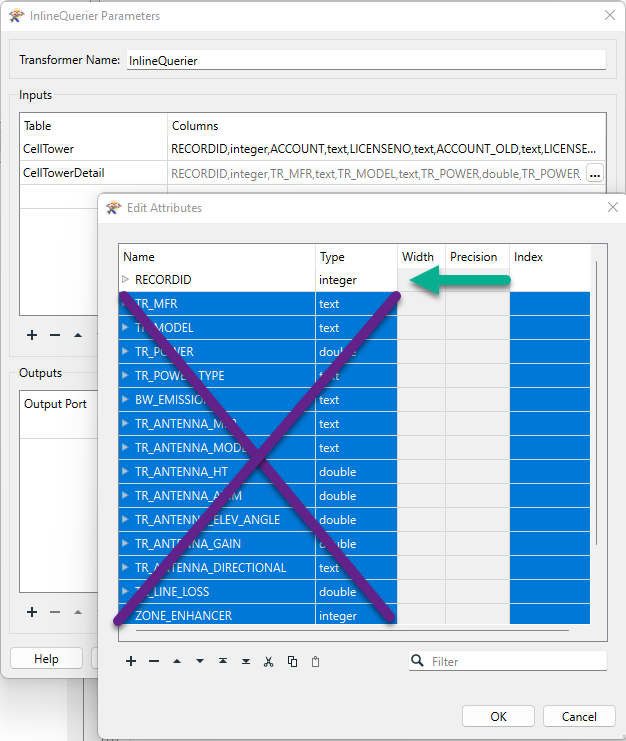I had a solution to this problem using a FeatureJoiner and a Test Filter that worked for smaller data sets (previous solution below). But my datasets have grown and this process is too slow now. I tried InlineQuerier but couldn't achieve success. I suggestion was to write a python program to do this but I am not experienced enough with python.
Is the a way to join to tables as described in the title of the message?





 I'm not sure about the speed with your data set though.
I'm not sure about the speed with your data set though.

 and your SQL might look something like:
and your SQL might look something like: